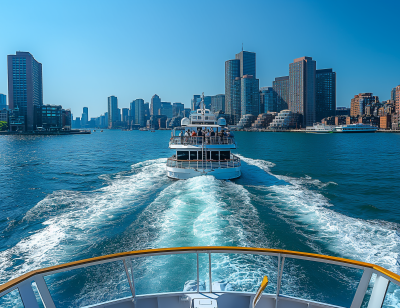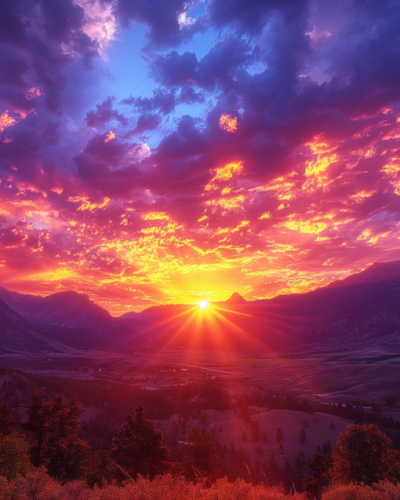When planning a trip to Banff National Park during spring or fall, beware: bears (and bear puns) are imminent!
Planning a trip to Banff National Park seems well and fine until you find out that it is also known as Bear Country. And if you remember what anyone with good intentions might tell you, it’s always better to be safe than sorry.
With that said, let’s jump into some safety tips you should always bear in mind on your upcoming wildlife adventure to Banff.
Understanding Bear Behavior
Are bears really the danger, or are we upright humans the real problem? Again, bear with me on this one. After all, the cliche ‘don’t poke the bear’ won’t be widely renowned if someone didn’t go ahead and did just that for a Darwin Award.
However to effectively practice bear safety, we have to first look into these furry creatures with a fresh perspective.
Debunking Bear Myths
Contrary to popular belief, bears are not the bloodthirsty, savage beasts that are just waiting to maul the next unsuspecting hiker. Of course, they are not the cuddly, honey-loving bed pals made from stuff of good nights and sweet dreams either.
In reality, most bear encounters are the result of humans encroaching on their natural habitats or inadvertently attracting them with improperly stored food. In short, yes— we are truly the ones who poke the bears! But these gigantic creatures are actually quite shy and prefer to avoid confrontation when possible.
With that in mind, let’s find out more how we can avoid dangerous park encounters with these majestic creatures in the wild:
Types of Bears in Banff National Park
Banff is home to two types of bears:
- BLACK BEARS: Typically smaller in size with a straighter face profile, black bears can vary in color from black to brown or even cinnamon.
- GRIZZLY BEARS: Larger and more muscular than black bears, grizzlies have a distinctive hump on their shoulders and a concave facial profile.
If you find yourself suddenly face to face with either, remember this catchy verse which can help you: “If it’s black, fight back. If it’s brown, lie down.” Fortunately, we can omit the last, dark part of the verse which says: “If it’s white, say goodnight,” as there are no Polar bears in Banff.
Bear Activity Seasons
When planning a trip to Banff to specifically see bears in the wild, these are the best times to visit:
- Spring: As bears emerge from hibernation in the late spring, typically between mid-March and mid-May, they are usually faced with a scarcity of food as the ground is still covered in snow. During this time, the bears spend their time scouring the valley bottoms for any available sustenance. It’s a challenging period for the bears as they try to regain their strength after the long winter.
- Fall: In the late summer and fall, as bears prepare for hibernation, they enter a state of hyperphagia. This means they eat essentially all day, as they need to gain a significant amount of weight to survive the winter.
Bear Safety Tips
The key to coexisting peacefully with bears is simple: Give them their space and they’ll give you yours.
Of course, that doesn’t mean you should let your guard down completely. On top of a bear safety emergency kit, first aid supplies, and a system for signaling your companions, be prepared for unexpected situations while exploring the wilderness.
Sometimes, you may unexpectedly experience bear sightings in Banff. In such cases, you’d still want to exercise the necessary precautions whether you’re staying in a forest cabin or a hotel.
Remember these tips When planning a trip to Banff:
Follow Park Rules
Familiarize yourself with key regulations in Banff to protect wildlife and ensure visitor safety. Make sure you respect park guidelines to preserve the natural habitat and wildlife populations (this isn’t the time for detours!).
Also, understand the legal implications of interacting with wildlife, including fines and penalties for non-compliance with park regulations.
Hiking Safety
Planning a trip to Banff is the perfect opportunity to invite that one loud friend of yours for a hike. Make noise, talk loudly, clap, or sing to alert bears of your presence and avoid surprising them. Hike in groups of three or more to increase safety and visibility on the trail. Lastly, you should also wear bright clothing that protects you from weather conditions and makes you highly visible to these shy, introvert bears.
Camping Precautions
So you’ve invited one loud friend, now you have to invite that one “mom-friend” who’s uber serial at tidying up. See, you’ll need to keep your campsite clean and free of food scraps to avoid attracting wildlife. You’ll also be best-served using bear-proof containers and designated storage areas to prevent attracting bears to your campsite.
Encounter Protocol
Remaining calm is always of the essence should you find yourself in a bear encounter. Avoid sudden movements that may startle the bear, and do not run lest you want to trigger a response.
Back away slowly while facing the bear, and maybe start pawing your pockets for that bear or pepper spray. Don’t be trigger-happy, though; these deterring tools are an absolute last resort (and can be purchased or rented in Banff).
Planning a Trip to Banff with ThisCityKnows
Respecting wildlife and following safety guidelines are paramount when planning a trip to Banff. By enrolling in a local wildlife safety course or joining a guided tour, you can enhance your knowledge and ensure a safe and enjoyable experience in the wild amidst the bears.
To better equip yourself in this pristine wilderness, let ThisCityKnows be your guide! Browse hundreds of guides on wildlife destinations around the world, and set out for your next adventure with confidence and awareness.











